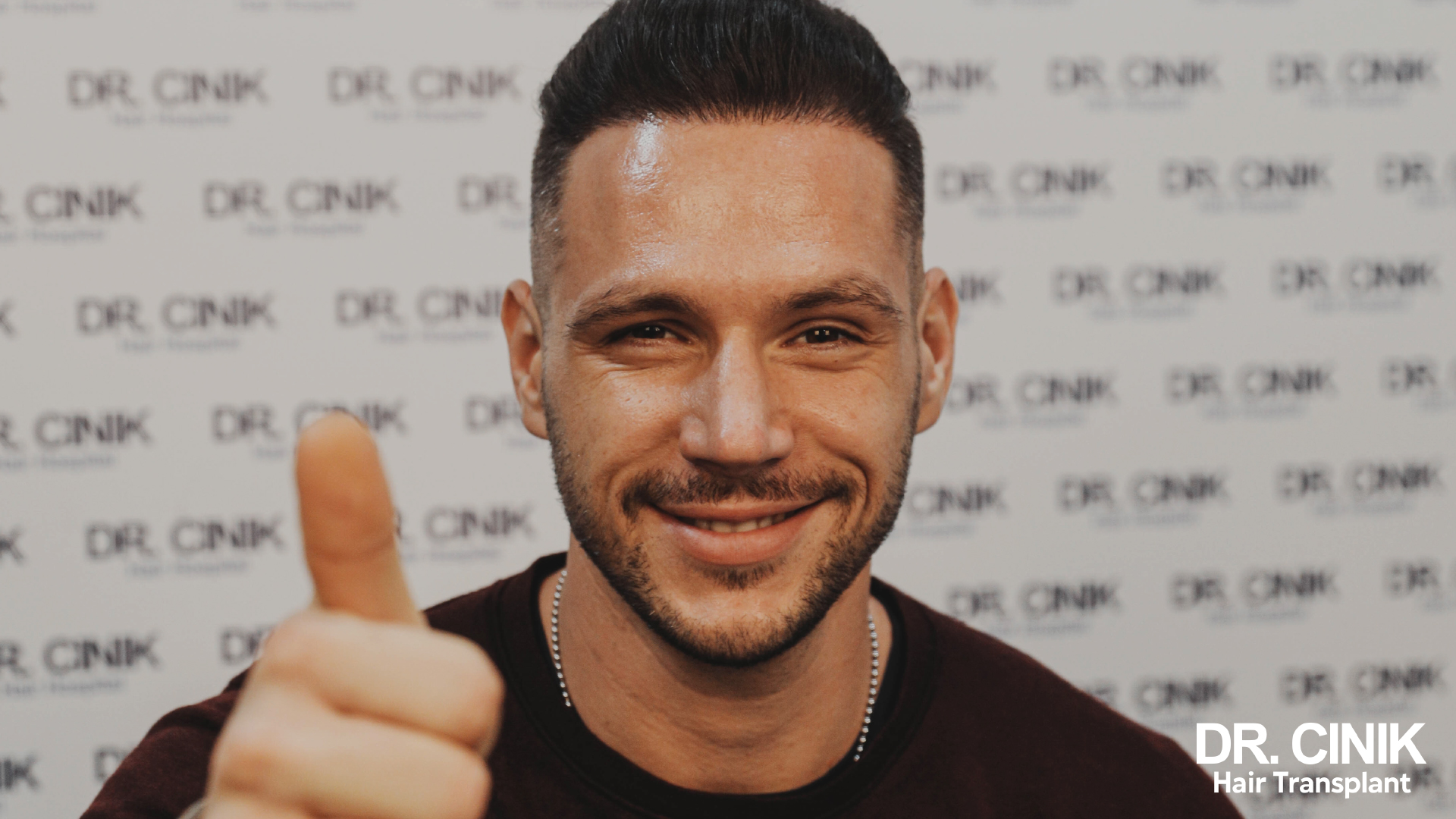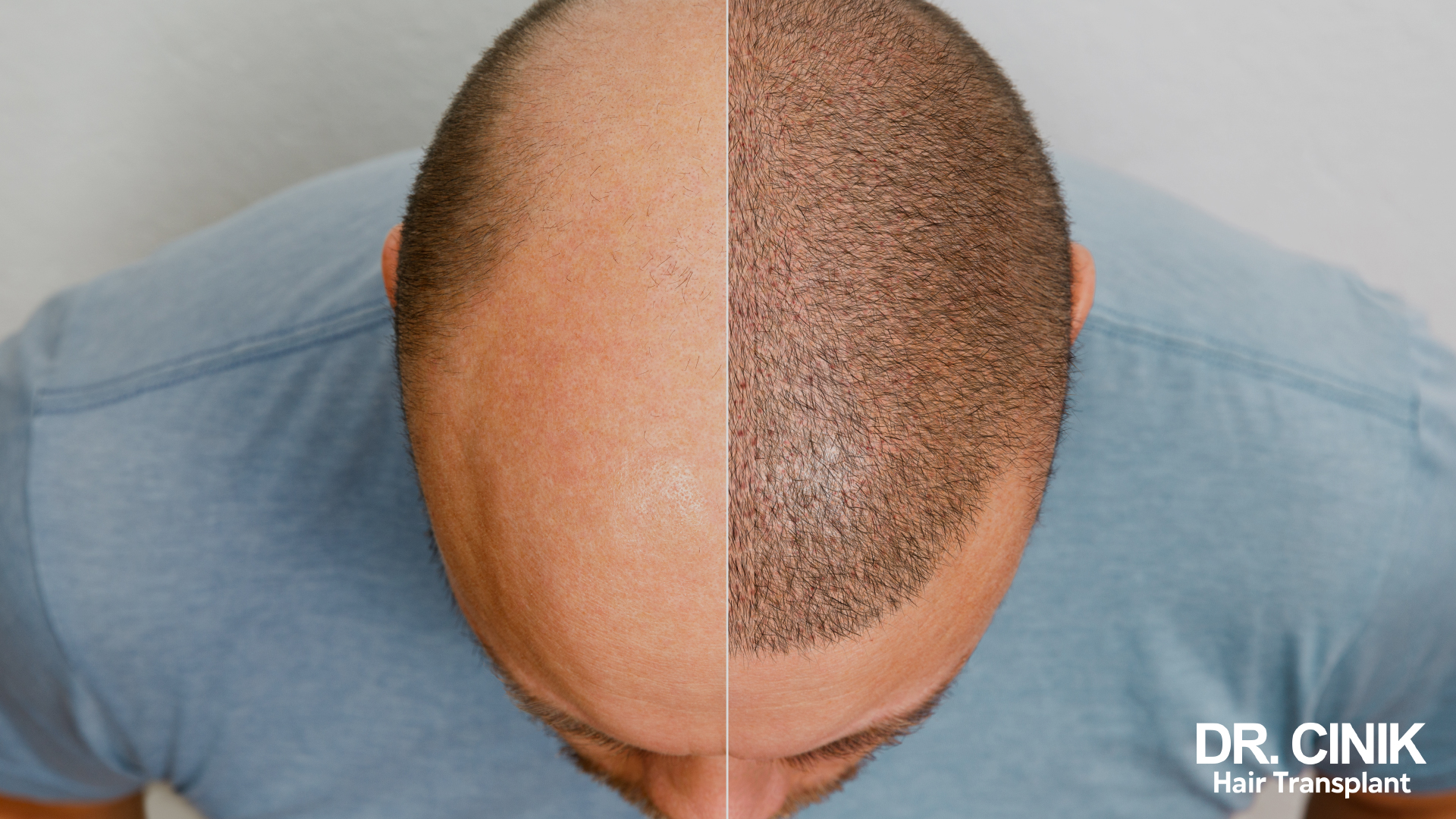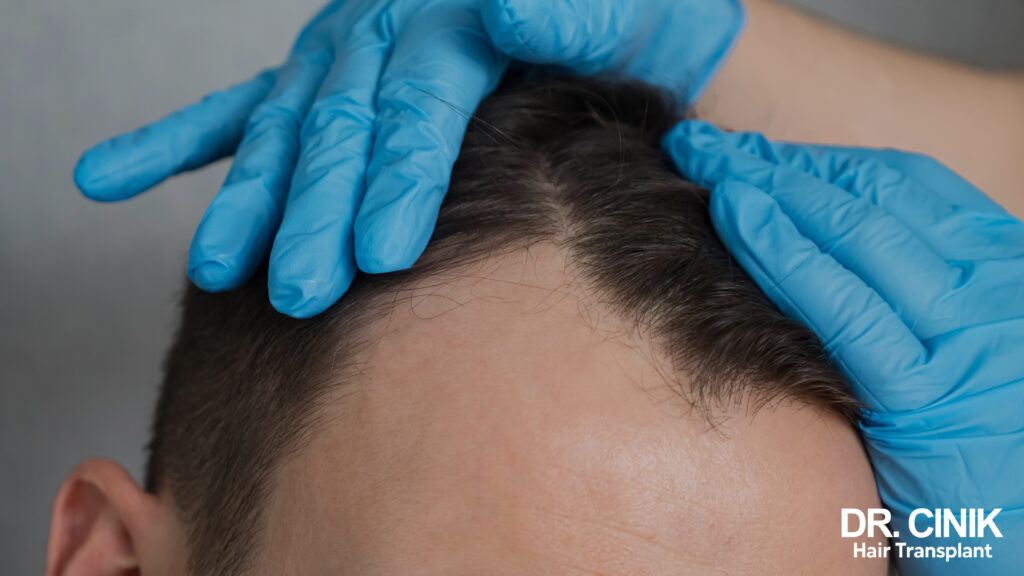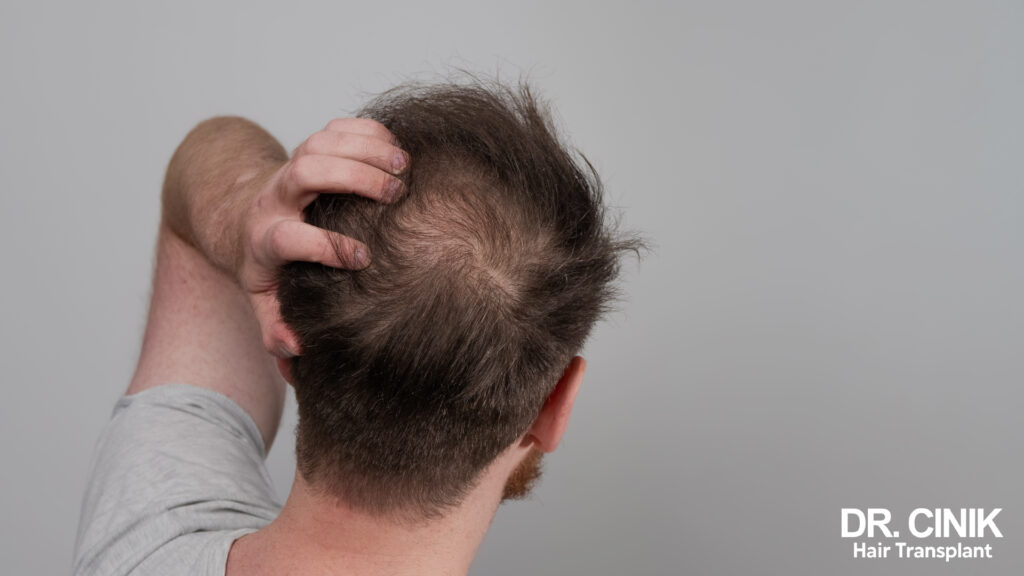Shock-Loss or Sudden Hair Loss After A Hair Transplant: Should You Be Worried?

Sommaire
Around three months following your hair restoration procedure, you may observe abrupt hair shedding in the transplant area. Called “shock loss”, this condition affects 60 to 80% of transplant patients. It can be alarming to lose hair again after your transplant suddenly. However, rest assured that post-operation shock loss is temporary, harmless, and a normal part of the hair growth cycle being triggered. This article explains the science behind the occurrence of shock loss. Tips are also provided on expediting renewed hair regrowth after this abrupt hair-shedding phase passes.
Why Does My Hair Fall Out After a Hair Transplant?
The surgical trauma involved in a hair transplant procedure can spur a temporary condition known as localised telogen effluvium. This leads to abrupt hair shedding approximately 1-3 months post-operation, which is referred to as shock loss.
During the transplant, the extracted hair follicles experience stresses that can trigger premature entry into the hair cycle’s resting phase (telogen), abruptly stopping growth. Main causes include:
- Cutting follicular grafts from the donor area severs their blood supply for a period, starving roots of oxygen.
- Creating recipient sites via micro-incisions causes adjacent follicle trauma, spurring the telogen phase.
- The physical stress of any surgery can impact hormones regulating the hair cycle.
While this shock loss appears dramatic a few weeks after the transplant, take heart that the abrupt shedding is temporary. Hair regrowth typically resumes normally again within a few months as follicles re-enter the active growth phase.

Does Shock-Loss Occur in All Hair Transplant Patients?
While quite common, not all hair transplant patients will experience notable shock loss in the months following their procedure. According to current research, around 60-80% of surgical patients undergo some degree of hair shedding linked to localised telogen effluvium approximately 1-3 months post-operation.
Studies generally indicate larger graft quantities reinserted during extensive procedures correlate with increased shock loss severity.
Individual patient sensitivity also plays a role. Some scalps undergo greater inflammatory trauma response to surgery, making follicles more prone to prematurely entering the telogen phase. This helps explain variability in shock loss extent between patients.
When Does Shock Loss Occur After Hair Transplant Surgery?
The sudden hair shedding from localised telogen effluvium transpires over a range of time but most commonly sets in 2-3 months post-procedure. The general timeline is:
- Hair loss initiates around the 2nd-3rd week following the transplant surgery.
- Shedding reaches its max around the 6-week mark post-operation.
- Shock loss declines by months 2-3 and transitions into the renewed growth phase.
However, some patients may experience delayed onset up to 2-3 months later. Inform your surgeon if you notice hair loss this late, as other factors could be involved. Overall, though, the abrupt hair shedding is temporary. New hairs begin emerging as shock loss wanes after the 2-3 month mark in most cases.
When Will My Hair Grow Back After Shock Loss?
The timeline for renewed hair growth following the temporary shedding phase is:
- As covered above, shock loss arises approximately 2 weeks to 3 months post-surgery.
- Regeneration then generally initiates around the 4-month mark post-transplant, as follicles reactivate from the telogen phase.
- Patients experience progressive regrowth for 8 to 12 months following their procedure.
- Final transplantation results become fully visible from 12 to 15 months out as the growth cycle stabilises.
So, while shock loss can be distressing in the weeks following surgery, ensure that the hair regeneration process begins around 4 months post-operation. Complete regrowth emerges on average between 1 and 1.5 years from the procedure.

How Can I Reduce the Risk of Shock Loss After A Hair Transplant?
Several proactive steps can be taken to lower the chances and decrease the severity of shock loss:
Choose Less Invasive Surgical Methods
Opt for advanced techniques like FUE, Sapphire FUE or DHI over more traumatic strip methods (e.g. FUT). Manual follicular unit extraction (FUE) hair transplants are a minimally invasive approach that causes less stress to the patient.
Find an experienced surgeon
Research well-qualified, highly experienced hair transplant surgeons—their expertise results in more precise, gentle procedures that minimise tissue trauma.
Strategize Graft Numbers
Dr Cinik tailors the hair transplantation to move only adequate follicles, balancing coverage and smooth healing timeline.
Support Grafts After Implantation
Inject sites post-operation with PRP to stimulate implanted graft vascularisation, oxygen transport and growth activation through localised stem cells.
Follow Post-Operation Care Diligently
Strictly adhere to the surgeon’s recovery restrictions to avoid physically disrupting vulnerable grafts, which need proper integration time.

Are There Solutions To Help Hair Re-Grow Faster After Shock Loss?
Yes, patients can potentially help accelerate their hair regeneration timeline after temporary shedding subsides:
- Minoxidil may speed up the reactivation & growth of dormant follicles when prescribed by your surgeon. Inform your surgeon before using.
- Complementary hair treatments like clinical low-level laser therapy or Regenera Activa mesotherapy can stimulate growth.
The goal is to nourish and energise follicles to encourage faster cycling from the resting state into the active production phase after shock loss.
 en
en




